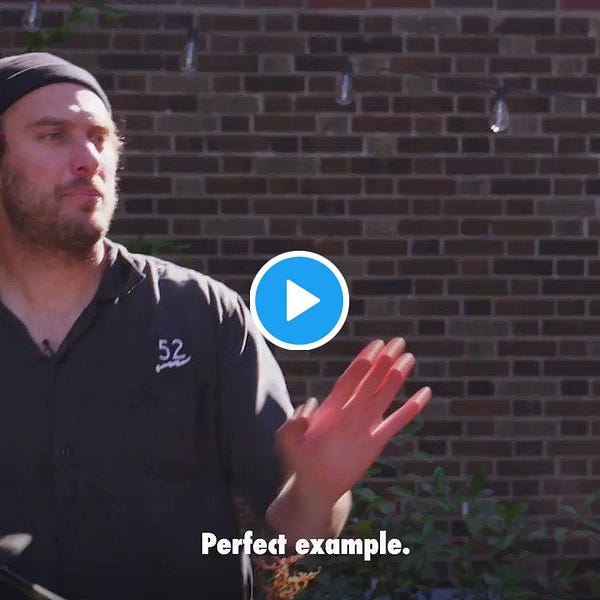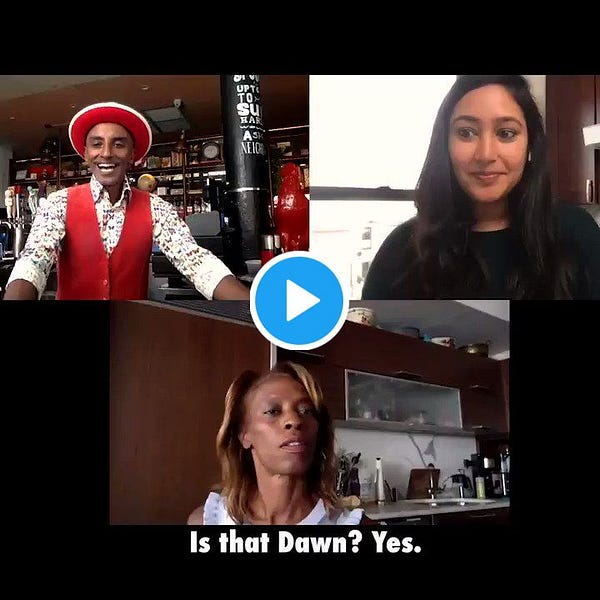Why heat disparities will be the defining human rights issue of the coming years
Issue 208: And in news literally nobody asked for, Brad Leone is back in the BA Test Kitchen and it's... pretty painful. Plus, this week's dairy situation.
Hello! Welcome to Nosh Box, a food newsletter. On Mondays, I send a reading guide of food system ideas and cheese recommendations, and on Thursdays, I dig deeper with an original essay or conversation you can only find here.

>>Here’s why we should all be paying attention to heat disparities:
You may remember Vann R. Newkirk II’s blockbuster cover story for The Atlantic last year, “The Great Land Robbery,” chronicling how Black farmers lost control of land en masse that had formerly belonged to them. More accurately, how predominantly white financial institutions and agencies disinvested from Black agricultural communities and swindled them out of 98 percent of their landholdings.
In a new essay, “Earth’s New Gilded Era,” Newkirk returns to an examination of inequality through the lens of agriculture in his persuasive argument that a defining human rights issue in the coming years will be heat. Much research points to the fact that the impacts of climate change often fall disproportionately on marginalized communities and on the Global South, and it’s also already the case that many of the most exploited workers in the food system in particular — agricultural laborers — are forced to work outside without always having access to proper safety equipment (or, for that matter, COVID protection).
He writes:
Heat bears down most on the global working poor and developing countries, while their wealthier planetmates are able to evade the worst of the warming. What’s more, consumption by those wealthier folks helps create the warming, which in turn robs the poor of opportunity and walls off economic mobility. Garment workers in Cambodia and Bangladesh toil in sweatshops to sew the moisture-wicking fabrics that make summer in Phoenix or Miami or Washington, D.C., bearable. In Qatar, itinerant workers labor at the outer edge of human survivability to fabricate air-conditioned hotels, malls, and arenas for the rich. And thousands of families flee environmental pressures in Central America only to find themselves suffering from the heat in the United States.

Photo by Balazs Gardi for The Atlantic
In fact, a new study in January found that urban “heat islands,” which can sometimes be 20ºF hotter than other parts of the same city, map onto neighborhoods cordoned off for minority and poor families as part of racist housing planning in the 20th century. Racially redlined neighborhoods have become the hottest areas in 94 percent of the 108 cities analyzed as part of the study, because decades of disinvestment have led to less tree cover and green space and more exposed concrete than in wealthier and whiter neighborhoods.
Newkirk addresses this issue:
When Americans think about climate change, they probably don’t have these kinds of consequences in mind—an uptick in stillbirths, or more Black children with asthma. Climate communication often tends toward the apocalyptic and the episodic, for good reason: Dramatic events are a good way to get apathetic people to care. But the destruction wrought by the heat gap in American neighborhoods is just as important as the high-profile cataclysms. That destruction is insidious and hard to follow because it plays out along existing lines of inequality and injustice. Comparable to its role in some chemical reactions, heat accelerates the logical outcomes of unequal human systems. In this reaction, heat is not necessarily a bomb that will suddenly vaporize civilizations. Here, its preferred pathway is decomposition, working slowly and steadily at severing bonds until two components are separate, if not equal.
You should read the full article here.
>>Does Overselling Regenerative Ag’s Climate Benefits Undercut its Potential?
(Probably!)
>>R.I.P Tab, Coke’s first diet soda
In what is surely a shock to many, this news means that Tab had even still been around until now. Huh!
>>Brad is back on video at Bon App, and it’s… uncomfy
A couple weeks ago, I wrote about the joys of Sohla El-Waylly’s new show on the Babish Culinary Universe, called Stump Sohla. (And in the meantime, she’s also announced another new show with Food52. Go Sohla!) I mentioned that it works so well because it puts the clearly very talented Sohla in the driver’s seat, rather than relegating her to fix the errors of her white BA co-stars. And the recent mass exodus of BA Test Kitchen video personalities, including Claire Saffitz earlier this month, doesn’t leave too many of them left.
Enter today’s new video with Brad and Andy, who have precisely zero on-screen chemistry:


This follows a somewhat painful video feat. BA’s new EIC, “global advisor” (??), and executive editor — Sonia Chopra, formerly of Eater, the one person in this trio I’m most excited about, says, like, three words. It’s hard to watch.


Based on not only these new videos but also the fact that Conde Nast seemed to rather lose its breakout Test Kitchen video series than pay creators of color equitably… maybe the final nail is in the coffin of the BA Test Kitchen, if it wasn’t already.
So how about this, instead: Catch up on the newest ep of Stump Sohla:



The Dairy Situation
Welcome to The Dairy Situation, a new segment of Nosh Box focusing on cheese! And other dairy products as I see fit, but mostly… cheese!
My favorite cheese this week is Grayson, from Meadow Creek Dairy in Virginia. It’s a washed-rind cheese like Taleggio, but it’s meatier and onion-ier and beefier and just all around bigger. And, well, stickier and stinkier. But it’s made with Jersey cow milk, which gives it a fattier richness that reminds me of raclette (or Ogleshield, if we’re really gettin’ into it), or a hamburger.
I paired it with Chill State, a hazy IPA from Fair State Brewing Cooperative here in the Twin Cities, which was particularly enjoyable. I think the maltiness of the beer highlights the sweetness and cuts the funk of the washed-rind cheese really nicely. But Grayson would also pair reeeeeally well with a porter or a dry cider. Go find it!!!!

See ya Thursday!








